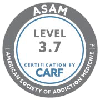What Are Designer Drugs?
Designer drugs, otherwise known as synthetic drugs, are chemically engineered substances that are created to mimic the effects of illegal drugs while circumventing existing drug laws. These drugs are designed to produce similar psychoactive effects as traditional illicit drugs such as marijuana, cocaine, amphetamines, and more.
There are two main types of synthetic drugs: synthetic cannabinoids and synthetic cathinones. Street names for these common synthetic drugs include Spice, K2, Bath Salts, Ecstasy, Meow Meow, Flakka, and Molly.
Synthetic Drug Detox
A medically monitored approach is imperative with synthetic drug detox. Due to their novelty in the market, and due to an ever-changing composition, withdrawal symptoms are oftentimes severe and unpredictable. Common withdrawal symptoms include anxiety and panic attacks, changes in appetite and eating patterns, headaches, physical discomfort, and intense psychological cravings.
There are currently no FDA-approved medications uniquely designated for the treatment of synthetic drug withdrawal; they are very new to the market. Due to this, a case-by-case approach is taken, with behavioral therapy, psychiatric services and a holistic approach towards treatment are generally parts of synthetic drug therapy.
Medical assistance is ideal for managing the unpredictable nature of synthetic drug withdrawal and works towards leading individuals down the road of sobriety. Group counseling is also popular in addressing emotional responses to detox and planning ongoing treatment.








